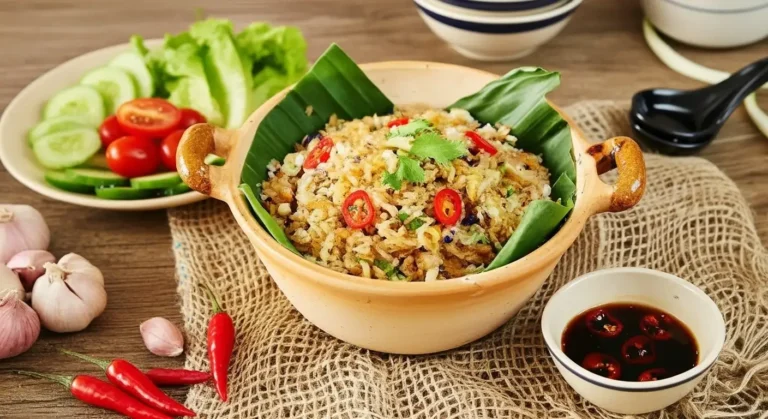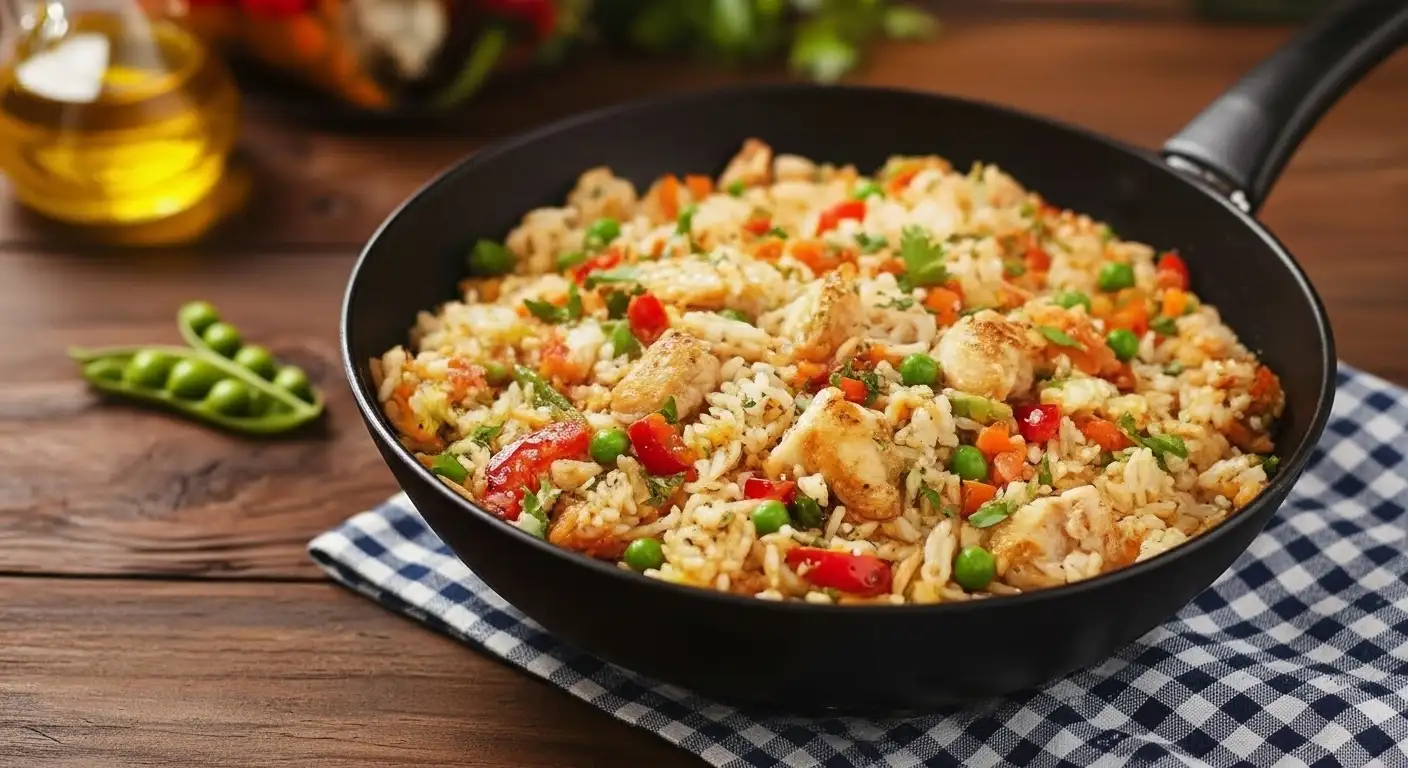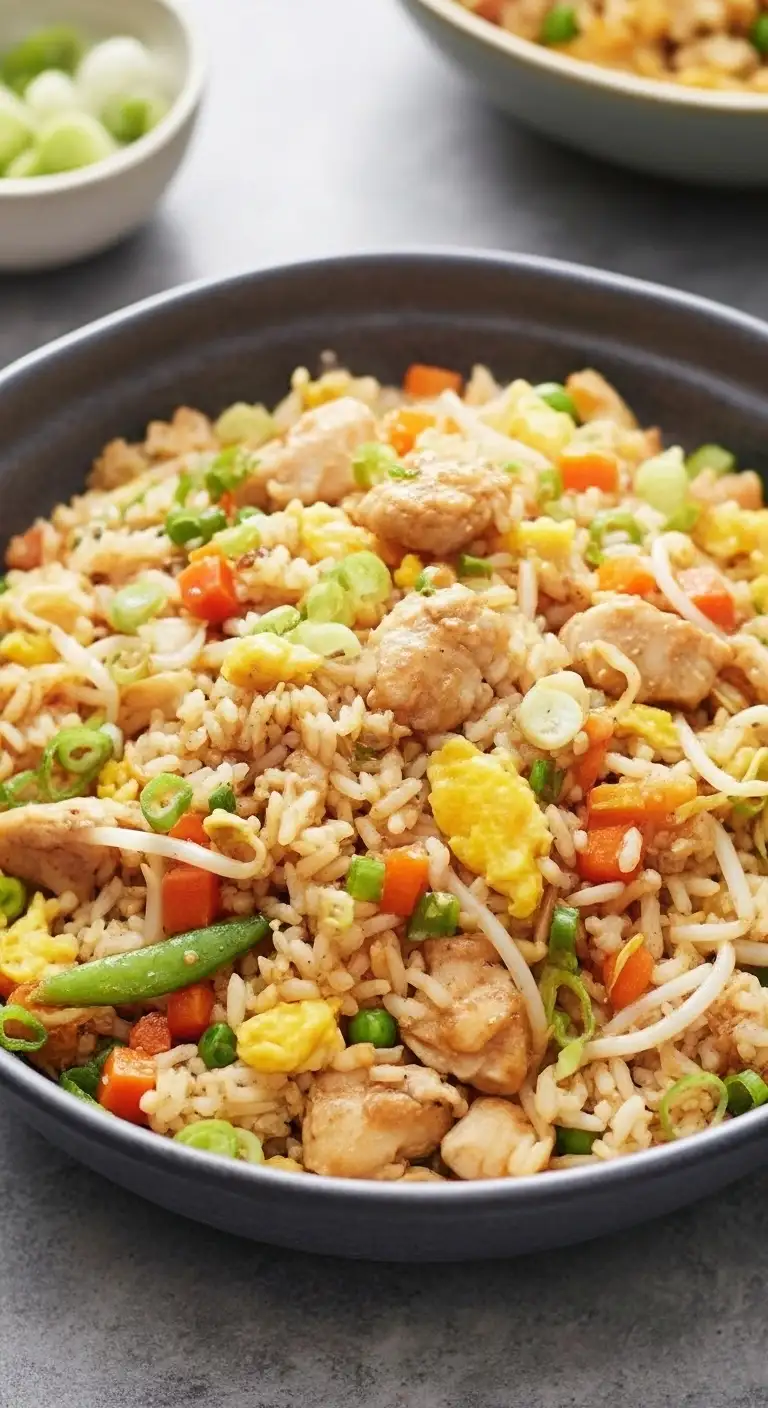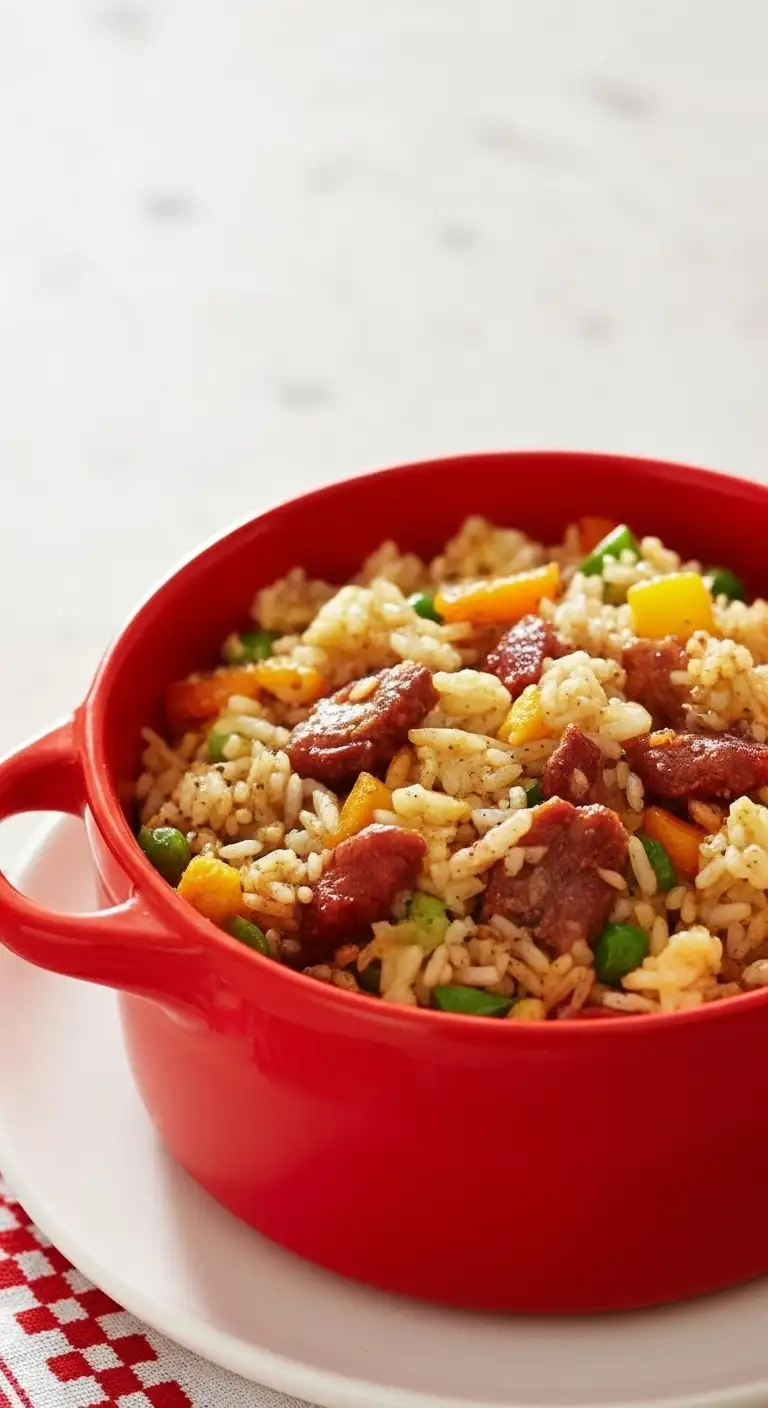Cơm Chiên (pronounced “Cohm Chee-en”) is the Vietnamese take on fried rice. Translating simply to “fried rice,” it is a beloved and ubiquitous dish found everywhere from street stalls and small family restaurants to upscale eateries across Vietnam.
While influenced by Chinese fried rice, the Vietnamese version distinguishes itself through the use of essential local seasonings like fish sauce and often incorporates uniquely Vietnamese or regional ingredients, resulting in a savory, aromatic, and deeply satisfying comfort food.

Cơm Chiên: The Basics
The Rice: The secret to great Cơm Chiên is the use of day-old, cooked jasmine rice. Cold, dry rice separates better in the wok, preventing the final product from becoming mushy or clumpy.
The Seasoning Core: Unlike Chinese fried rice which heavily relies on soy sauce, Cơm Chiên is balanced with:
Fish Sauce (Nước Mắm): The key Vietnamese flavor agent, adding a savory umami depth.
Soy Sauce (Nước Tương): Used to color the rice and add a saltiness.
White Pepper: Provides a subtle warmth and aromatic finish.
Aromatics: Garlic and shallots are typically sautéed first to infuse the cooking oil.
Essential Components: The most basic and classic Cơm Chiên will always include:
Egg (Trứng): Usually scrambled and broken into pieces, or cut into thin ribbons from a quick egg crêpe.
Mixed Vegetables: Most commonly diced carrots, peas, and corn (often from a frozen mix).
Scallions (Hành Lá): Chopped and added at the very end to retain their fresh green color and crunch.
Types and Variations of Cơm Chiên
Cơm Chiên is highly versatile, making it the perfect canvas for leftovers and fresh ingredients. The dish is usually named after its main protein(s).
| Vietnamese Name | Translation | Key Ingredients |
|---|---|---|
| Cơm Chiên Thập Cẩm | Mixed Fried Rice (Assorted) | The "deluxe" version, often featuring a mix of Chinese sausage (lạp xưởng), shrimp (tôm), and sometimes char siu pork (xá xíu). This is the most popular style. |
| Cơm Chiên Tôm | Shrimp Fried Rice | Features shrimp as the primary protein. |
| Cơm Chiên Gà | Chicken Fried Rice | Features diced chicken. |
| Cơm Chiên Dương Châu | Yangzhou Fried Rice | A direct translation of the famous Chinese dish, featuring the classic mix of peas, carrots, shrimp, and diced lạp xưởng. |
| Cơm Chiên Cá Mặn | Salty Fish Fried Rice | A more specialized, highly savory version where the rice is fried with salty, preserved fish (often fish preserved in salt and oil). |
| Cơm Chiên Trứng | Egg Fried Rice | The simplest version, focusing only on rice, egg, and seasoning. |

How to Eat Cơm Chiên
Cơm Chiên is a complete meal in a single bowl or plate, typically enjoyed hot right after cooking.
Dipping Sauce: Cơm Chiên is often served with a small bowl of simple dipping sauce: either a small dish of light soy sauce (nước tương) or a lightened fish sauce (nước mắm), sometimes mixed with chili. This allows the diner to adjust the saltiness and umami level to their preference.
The Fresh Plate: It is almost always served alongside a garnish plate to cleanse the palate. This typically includes:
Sliced Cucumber
Sliced Tomato
Fresh Herbs (like cilantro or Vietnamese mint)
The Spoon: The dish is best eaten with a spoon, allowing you to scoop up a balanced bite of crispy rice, savory meat, and crunchy vegetables.
Regional Differences
Cơm Chiên is one of the more consistent dishes across Vietnam, as it relies on widely available ingredients. However, the seasoning reflects the general flavor preferences of each region.
| Region | Flavor Profile & Ingredients | Typical Seasoning/Style |
|---|---|---|
| Southern Vietnam (Saigon/Mekong Delta) | Sweet and Rich. Southern cuisine often favors a touch of sweetness. | Fried rice here often uses more oil and sometimes a little sugar to balance the saltiness, matching the local preference for sweeter flavors. Seafood and lạp xưởng (Chinese sausage) are very common. |
| Central Vietnam (Huế/Đà Nẵng) | Spicy and Bold. The Central region's cuisine is known for its strong, savory, and spicy notes. | The seasoning will be bolder, and the dish is more likely to include a heavy dose of chili oil or chili paste on the side, reflecting the love for heat. It also makes prominent use of fish sauce. |
| Northern Vietnam (Hanoi) | Subtle and Salty. Northern food is traditionally less sweet and oil-heavy than the South. | The Northern style (Cơm Rang) is generally less colorful and less sweet. It relies more on the savory flavor of salt and fish sauce than on rich sauces like oyster sauce. It tends to be a simpler, more rustic dish focusing on the quality of the rice and the protein. |




